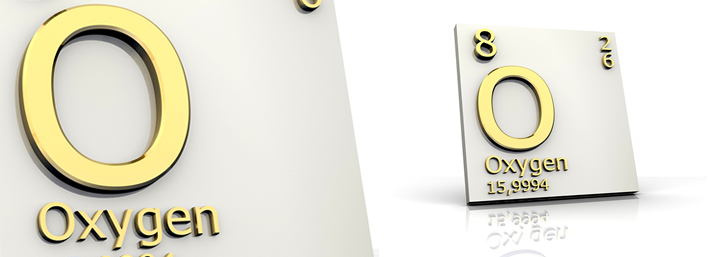Oxygen Testing

Oxygen Determination by Unterzaucher Method:
The appropriate size solid sample is weighed and inserted into a pyrolysis tube which is backswept to remove any residual air occurring at the insertion. The sample is then pyrolyzed at 1000 deg C in the presence of purified carbon.
The resulting CO gas passes through copper heated at 670 deg C to remove any sulfur. Additional traps remove any HCl or HBr present at this point. The CO is oxidized to CO2 and subsequently trapped on a preweighed Ascarite tube. Experience has shown that the proper timing at each step is critical.
From the increase in weight, one can calculate the amount of oxygen present in the original weighed sample to within +/- 0.30%. Interferences include fluorine, phosphorus, and several other metals. The most common primary standard used in calibration is Benzoic Acid (26.20% oxygen); although many others can be used.
The preceding is a brief description of our techniques used in oxygen determinations.
Please phone or e-mail us if you have specific questions about oxygen analysis in regard to your sample.
What is Oxygen?
Atomic weight 15.99, Atomic Number 8, Melting Point -218.79 C, Boiling Point -182.95. C.
Oxygen is a major component of air, produced by plants during photosynthesis, and is necessary for aerobic respiration in animals. The word oxygen derives from two roots in Greek, oxys (acid, sharp) and -genes (born of).
The name “oxygen” was chosen because, at the time it was discovered in the late 18th century, it was believed that all acids (characterized by a sharp or sour taste), contained oxygen. (The definition of acid has since been revised).
At standard temperature and pressure, oxygen exists as a diatomic molecule with the formula O2, in which the two oxygen atoms are doubly bonded to each other. In its most stable form, oxygen exists as a diradical (triplet oxygen) with two unpaired electrons in molecular orbitals of the O2 molecule.
Though unpaired electrons are commonly associated with high reactivity in chemical compounds, triplet oxygen is relatively (and fortunately) unreactive by comparison with most radicals.
Singlet oxygen, a name given to several higher energy species of molecular oxygen in which all the electron spins are paired, is much more reactive towards common organic molecules. In nature, singlet oxygen is commonly formed from water during photosynthesis, using the energy of sunlight.
It is also produced by the immune system as a source of active oxygen. Carotenoids in photosynthetic organisms and possibly also in animals, play a major role in absorbing energy from singlet oxygen and converting it to the unexcited ground state, before it can cause harm to tissues.
Liquid O2 and solid O2 are clear substances with a light sky-blue color. In normal triplet form they are paramagnetic due to the spin magnetic moments of the unpaired electrons in the molecule, and the negative exchange energy between neighbouring O2 molecules.
Liquid oxygen is attracted to a magnet to a sufficient extent that a bridge of liquid oxygen may be supported against its own weight between the poles of a powerful magnet, in laboratory demonstrations. Liquid O2 is usually obtained by the fractional distillation of liquid air.
Ozone, the triatomic allotrope of oxygen, is a poisonous gas with a sharp odor. It functions in the upper atmosphere of the Earth as a shield against UV radiation, and has recently been found to be produced by the immune system as an antimicrobial (see below). Liquid and solid O3 (ozone) have a deeper blue color than ordinary oxygen, and they are unstable and explosive.
Oxygen is slightly soluble in water. At 25° C under 1 atm of air, a litre of water will dissolve about 6.04 cc (8.63 mg, 0.270 mmol) of oxygen, whereas sea water will dissolve about 4.9 cc (7.0 mg, 0.22 mmol). At 0° C the solubilities increase to 10.29 cc (14.7 mg, 0.460 mmol) for water and 8.0 cc (11.4 mg, 0.36 mmol) for sea water.
A recently discovered allotrope of oxygen, tetraoxygen (O4), is a deep red solid that is created by pressurizing O2 to the order of 20 GPa. Its properties are being studied for use in rocket fuels and similar applications, as it is a much more powerful oxidizer than either O2 or O3.[1]




